The Weekly Mash, Friday 25th July
A week dedicated to my other favourite spirit, rum.
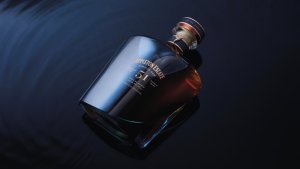
Bringing Joy To Rum
Appleton Estate’s master blender Dr. Joy Spence is waiting from me in a discrete wood-panelled room in the hidden depths of Berry Bros & Rudd. On the table is a tiny phial of rum. She pours a dribble into each of our glasses. The room fills with a extraordinary scent – a genie released. I’ve been lucky to encounter many old spirits, but have never experienced such an instantaneous effect.
There’s only 25 bottles of Appleton Estate ‘The Source’ (62.1%/£60k) LINK which, at 51 years old is the oldest tropically-aged rum ever bottled. It was filled on July 30, 1973 under the eye of Joy’s predecessor, Owen Tulloch from one cask released to commemorate the 275th anniversary of the estate.
It started life within a batch of four casks from a single marque [style] which Joy explains sits at the heart of all of the estate’s expressions. As the angels took their share, so the casks were consolidated to control oxidation and slow oak ingress. The four became three, then two, and finally one.
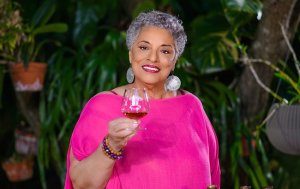
I inhale an elegant mix of cassia, raisin and a distinct smoked orange top note which Joy explains only appears in this marque after three decades plus. It’s filled with a character which only appears in mature spirits where the fresh and zesty fruits of youth are reduced into a mix of honeyed syrups, over-ripeness and sun-dried. It’s rum rancio LINK that nods towards Cognac.
After that introduction, it sinks into a leather armchair, picks a cigar from a nearby humidor and relaxes. Here’s more citrus, some cassia, deeper dried fruits (fig and raisin) some cacao, and at the end the liquorice lick of molasses. There’s no astringency, the wood in ideal balance. A sophisticate whose presence from that single sip lasts for an hour.
It is the culmination, and affirmation of the stylistic shift which Joy introduced. ‘When I took over [in 1997 after a 16 year ’apprenticeship’ under Owen] I felt the rums had too much oak. My approach was to reduce the oakiness – using older casks, and understanding the marques, because different rums age differently over time. Some will develop oakiness quickly, others don’t. In this one,’ she gestures to the bottle, ‘there’s no oak overpowering.
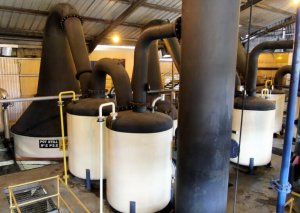
‘We knew what happens to this marque with long ageing and when we looked at it at 40 years, we knew it was going to be something special. It’s elevated Jamaica rum to the super-premium space which is where it should have been for a long time!
‘We started premium aged rum in 1986, then launched the 21-year-old in the ‘90s. Everyone thought that we were crazy, that we were lunatics,’ she adds with a huge laugh, ‘but we had vision and foresight. The Source shows that Jamaican rum can be at the same level as Scotch.’
Has it been frustrating therefore that rum has taken so long to play in the super-premium sphere, especially as Scotch and Cognac are both so well-established in that sphere?
‘Yes. In the past we couldn’t do this either because we didn’t have the money, or because the marketing people didn’t have the foresight. I always wanted to do a single marque pot still, but they just didn’t understand or comprehend. They were all in the zone of blending, but I was saying we can have both.
‘Now with Campari [which bought Appleton’s parent company Wray & Nephew in 2012] we’ve got the ‘Hearts’ single marque range because they understood that it would appeal to the connoisseurs.
‘There’s still misconception that rum is a cheap spirit, that you can just enjoy in a cocktail. It’s taken us a long time to get consumers to understand the value and quality of super-premium rum.’

The establishing of rum as a premium aged product was hampered by the spirit’s heritage of being a bulk spirit. It was only by distilleries taking control of their own destinies that the break could be made.
Rum was different to Scotch when in the late 80s and early 90s, all distillers tacitly agreed that single malt was a strategy to get out of the crisis, providing a degree of critical mass. In rum there were two players: Appleton and [Guyana’s] elDorado were capable and willing of making that leap.
After being thought of as crazy, this 51 year old must make you so proud.
’It makes me happy just to be alive to see this!’ she laughs, then pauses. ‘I’m losing so many of my friends. Everyone in my age group is going, going, gone. It is so sad.’
A sharp reminder of time’s passing is an inevitable side-effect of tasting an old spirit. You cannot help but think of what was happening when the new rum went into cask, and what has happened in Jamaica since.
It was laid down in a time of optimism. In 1973, Michael Manley, Jamaica’s Prime Minister had helped found the CARICOM economic union, and as Joy points out also introduced free education for students and a minimum wage.

It was also the same year that this tiny nation became a world force in music. ’73 saw the release of Bob Marley & the Wailers’ ‘Catch a Fire’ and ‘Burnin’, Toots & The Maytals’ ‘Funky Kingston,’ Tappa Zukie’s ‘Man Ah Warrior’ and Lee Perry’s early dub exploration [all below]. Here was the hope of a new Jamaica emerging, albeit on that was stymied by economics and political violence.
Even now, Joy points out, it’s taken time for local opinions about rum to change. Jamaica may be home but the call of emigration and the allure of the imported as a signifier of success has been strong.
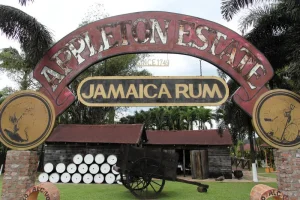
‘Anything that’s imported is premium and high-end,’ she explains. ‘The young guys with money go abroad and come back with their duty-free single malt. It was shocking to me that they’d never even tried Appleton Estate 12-year-old.’
Now however she sees a change underway, one borne out of necessity. ‘There’s now greater support in Jamaica for supporting local industries,’ she says. ‘Covid actually helped. Because we couldn’t get anything, people started cottage businesses and Jamaicans are supporting them post-Covid.
‘Now we’re releasing limited editions and they’re selling out quickly – there’s waiting lists for high-end rums which has never happened before. There’s a greater pride in Jamaican rum.’
It’s been helped along by her own initiative to convert Scotch-loving, young moneyed men. ‘I invite them over to my house and do tastings with them. That’s when they are converted. They really didn’t understand the complexity and depth of older rums. They thought rum was just Appleton Signature because that’s what they were making their cocktails.’ It’s something which encapsulate Joy – an unshakeable belief in rum’s quality and a refusal to be told otherwise. Any meeting will always be laughter filled, but you know that she has an iron determination. Joy will win.
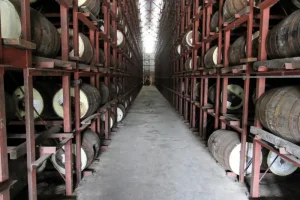
This change is attitude at home, she feels is allied to the opening of the new Appleton Estate visitor centre and also the passing of the GI for Jamaican rum whose committee she chaired. Now the country’s rum industry is covered by regulations covering fermentation, minimum age system, and no additives. The GI meant that Jamaican rum truly belonged to the island.
We’re back to the critical mass argument. Appleton is no longer the lone voice in rum. ‘It’s been a long journey,’ she says, ‘but now other producers are coming out with their limited editions, though,’ she adds with a grin, ‘maybe not in the same age category. Not many of them can do that! Barbados could have done more in the past, but they’re starting now with Foursquare being the most vocal.’ The rising tide and all that.
Only 25 people will be rich enough to afford The Source, but in this case, the price actually doesn’t matter. It is a statement of intent for the estate, the country and the category. It is the seat at the table, a halo.
————————————–—
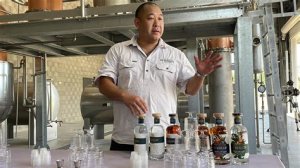
An Aussie Diversion
I first met Jason (aka Jacky) Chan in his old Melbourne dive bar, Hats & Tats, a loud, sticky, darkened temple of hedonism which also happened to have a stellar range of whiskies.
He and I were among the first to be quarantined in Australia (in my case New Zealand) when Covid hit. During the plague he helped run a kitchen supplying food daily to hospitality folks who were out of work and had no financial support. A good guy.
Though he was also behind West Winds rum, any chat with would always steer towards rum. Now he’s distiller at Queensland’s Burdekin, founded by Sophie and Anthony Duggan who set up Mount Elliot Springs bottled water. With an aquifer to hand it made sense to diversify. Given that the Burdekin region is the largest producer of cane in Australia rum made sense.
Jason runs juice or molasses (fermented with a proprietary yeast) through a 4,000litre Frilli pot/column set-up, while the angels that haunt the sub-tropics extract 10-12% a year.
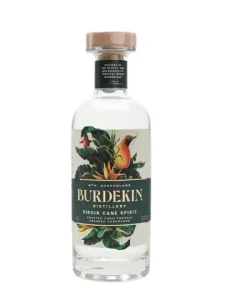 By law, Aussie rum has to be aged for two years in wood before it can be called rum so Burdekin’s white, Virgin Cane (40%/£44.95) is bottled as a ‘cane spirit’. Fresh and lightly vegetal with notes of tomatillo, and a slight nuttiness, there’s green mango, cooking apple and, oddly yet not unpleasantly, tomato ketchup on the palate.
By law, Aussie rum has to be aged for two years in wood before it can be called rum so Burdekin’s white, Virgin Cane (40%/£44.95) is bottled as a ‘cane spirit’. Fresh and lightly vegetal with notes of tomatillo, and a slight nuttiness, there’s green mango, cooking apple and, oddly yet not unpleasantly, tomato ketchup on the palate.
Vintage Cane (40%/£44.95) has been rested in PX which adds fig jam, raisins and chocolate-coated ginger to candied fruits. There’s a hint of sulphur.
The molasses-based Distiller’s Edition Premium VO (48%) has a extra dimension thanks to the higher strength to citrus blossom, caramel syrup latte and a decently weighty palate that mixes white pepper, toasted coconut and hazelnut.
Keep an eye out for them.
————
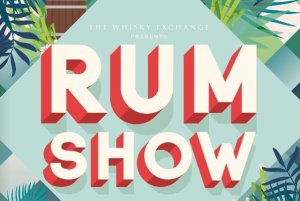
Being a Rum Punter
It was only after an hour at the Rum Show that I realised what was different. Not the fact that I was surrounded with rums, but that it had been years since I’d been a punter at a spirits show. Free of the responsibilities of classes and book-flogging I could ramble at will. So I did.
Shows can never be more than glimpses, giving you ideas for what to buy for further considered contemplation at home. They are for catching up, revisiting but also being open to surprises. You chat in the queues, swap tips, find surprises, such as the rum which smelled of freeze-dried gherkins. Was it good? I suppose it depends how much you like freeze-dried gherkins.
There was geeky talk of esters and dunder, or how Colombia’s viche is the new clairins [you hard it here first folks] and, as seems to be my bag at the moment a considerable number of significantly-aged rums.
In the past, the logic was that tropical ageing meant that rum matured twice as fast as Scotch. This was see as an advantage, ‘you get the same effect at eight years in the Caribbean as 16 in Scotland – and the rum’s cheaper!’ The flipside of that was that the belief that keeping rum over 16 years would simply make it woody.
It was too simplistic, but the message stuck. Rum can be aged for lengthy periods in the tropics and still be balanced. It’s a matter of understanding climate, wood management and warehouse techniques. It can become mature rather than old (i.e. overcooked or tired.
I didn’t try everything – but here is a small selection of my top finds. There will be more in the weeks to come:
In The Cupboard
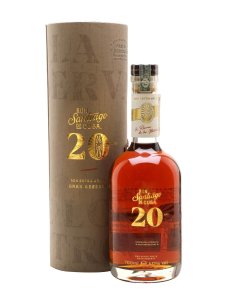 Santiago de Cuba 20yo (£40%/£171)
Santiago de Cuba 20yo (£40%/£171)
The combination of old, 500 litre casks kept in cellars, plus the complex Cuban system of elevage and blending has given this superb balance between spirit and oak. There’s tobacco, dried mandarin peel, spices, barbecued pineapple, black cherry and chocolate.
Tamosi Haubariria Enmore KFM 31 (52.6%/£362)
Made on the Versailles single wooden pot that was installed at Guyana’s Enmore distillery – and now sits in the Diamond distillery – this has classic density of fruit (elderberry) plus pot still notes of wet suede and camphor. It’s dry and highly spiced (there’s also a hint of horse blanket) but balanced by a purity of fruits (prune and damson) and bitter chocolate.
 Appleton Estate 1993, 29yo Hearts Collection (63%/£329) A single pot still marque offering ginger wine, Jamaican funk, treacle toffee, and a balancing lift of dried kiwi fruit, old pineapple, brown banana and gingerbread. Nicely crisp tannins add structure to the mix of loganberry, strawberry and butterscotch sweets.
Appleton Estate 1993, 29yo Hearts Collection (63%/£329) A single pot still marque offering ginger wine, Jamaican funk, treacle toffee, and a balancing lift of dried kiwi fruit, old pineapple, brown banana and gingerbread. Nicely crisp tannins add structure to the mix of loganberry, strawberry and butterscotch sweets.
On The Shelf
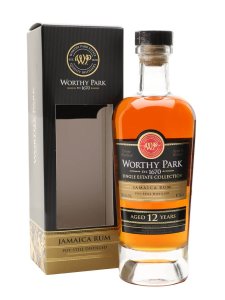
The Jamaican flag was also flown by the ever-impressive Worthy Park 12yo (56%/£63.75) which is more funked up than the highly-approachable Single Estate.
There’s more chewy weight and oiliness at work here with brown butter, dried mint, banana bread, nutty oak, toffee and candied ginger.
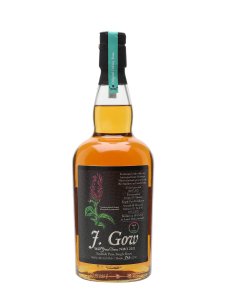
The Scottish rum scene was out in force. J.Gow 2021 Moscatel Cask (58.8%/£50.75) which is the product of a 30 day wild yeast ferment. There’s a mass of bright, juiced-up fruits (sweet peach tea, dried mango, raspberry) and a luscious palate that ends with five spice and light oak.
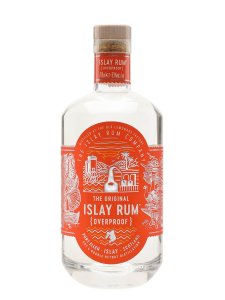 The 2nd batch of Islay Rum Overproof (63%/£54.95) is, for me, the most exciting release yet from a distillery which hit its straps from the word go. There again I’m a sucker for big funky hit of decaying pineapples, car-fermented Haribo, black banana, William pear and oiliness. It’s a blend of five distillations, split between a those with commercial yeast with fresh dunder, and six-week (!) ferment using wild and commercial yeasts, mature dunder, and ‘Islay bacteria.’ What’s not to love?
The 2nd batch of Islay Rum Overproof (63%/£54.95) is, for me, the most exciting release yet from a distillery which hit its straps from the word go. There again I’m a sucker for big funky hit of decaying pineapples, car-fermented Haribo, black banana, William pear and oiliness. It’s a blend of five distillations, split between a those with commercial yeast with fresh dunder, and six-week (!) ferment using wild and commercial yeasts, mature dunder, and ‘Islay bacteria.’ What’s not to love?
. ————————
In My Ears
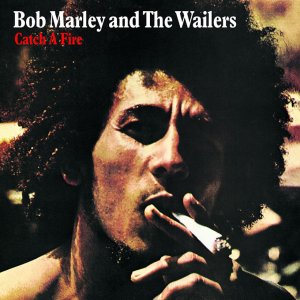
Let’s celebrate The Source by going back to go back to 1973 with Bob Marley & the Wailers’ ‘Catch a Fire’, Toots & The Maytals’ ‘Funky Kingston,’ Tapper Zukie’s ‘Man Ah Warrior’ and Lee Perry’s massive ’14 Dub Blackboard Jungle